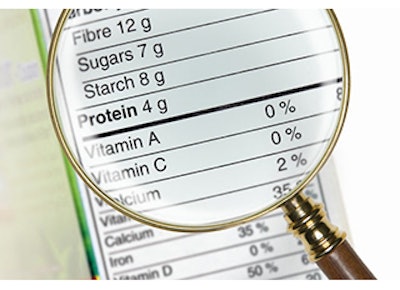
Recent food scandals in many parts of the world, coupled with consumers' increased awareness of the impact the food we eat can have on our health, have led to growing demands for traceability, awareness of product origins and greater overall transparency in the food supply. Regulatory oversight bodies around the world, faced with these requests and with a food supply of globalized provenance are responding in part by enhancing the regulations governing food labeling. These new regulations are designed to better protect and inform the population by offering a greater window into the food supply, and to create a more comprehensive set of requirements for food manufacturers.
A recent example of enhanced food labeling is the European Union (EU)'s 1169/2011 regulation, commonly referred to as INCO (Information to Consumers). The regulation became effective for most manufacturers and retailers in December 2014, and has already led to significant changes in what consumers know about the food they buy. European food manufacturers have been preparing for this change for a few years now and have worked these new requirements into their supply and manufacturing chains.
The US is in the process of establishing its own changes to labeling laws. In February 2014, the FDA, whose mission includes protecting and promoting public health by supervising and regulating food safety, partnered with First Lady Michelle Obama and introduced the new proposed food labels. The comments period ended in August.
The new labels are expected to establish common rules on food and beverage product information, helping consumers to make healthier choices within the broad range of options available in today's marketplace. A concerted effort has also been made to present information that reflects current trends. With larger portions the norm, the suggestion is to update calorie counts to account for today's "real life" servings. Other modifications include a clearer display of added sugars and other components such as vitamins and allergens.
While the the FDA and European labels are different, reflecting local specificities, both are focused on better legibility, more comprehensive information, and specific nutrient information (saturated and trans fats, added sugars, etc.) There is also an increased emphasis on presentation and design, with the ongoing goal of making information more accurate, more relevant, and easier to understand in order to be helpful rather than simply adding to consumers' information overload.
How will these changes affect food manufacturers and retailers?
Undoubtedly, any regulatory overhaul introduces complexity for the industries it seeks to affect, and the proposed labeling changes are no different, leading to understandable concerns from food processors. The FDA itself estimates the cost of compliance at approximately $2.1 billion. *
While no business looks at the prospect of additional expenditures without concern, there is an argument to be made for the additional opportunities that these labeling changes offer, as we've already seen with companies operating in the European space.
The increased requirement for transparency and accuracy has led to an in-depth review of product portfolios and supply chains, creating important discussions with suppliers and requiring additional compliance and accountability in order to satisfy traceability requirements. Food manufacturing businesses have also formalized their quality processes, reorganized their product sets and in some cases found the opportunities to create and market new, healthier products that are more in line with consumers' overall demands.
The ability to implement these changes and create these new opportunities requires advanced capabilities, including the ability to grab raw product specifications, to strengthen links along the manufacturing chain and to ensure continuity throughout the process. The tighter focus on accurate labeling requires access to a single version of the truth throughout the production cycle, from raw material to finished product. While each country operates differently, this process of change leads to more pushes for standardization and to greater accountability across the entire supply chain.
Ultimately, all of these changes are optimizations for the business and can lead to significant operational efficiencies down the line, helping to meet the dual requirements of keeping costs in check while also empowering consumers to make the best choices for them.























